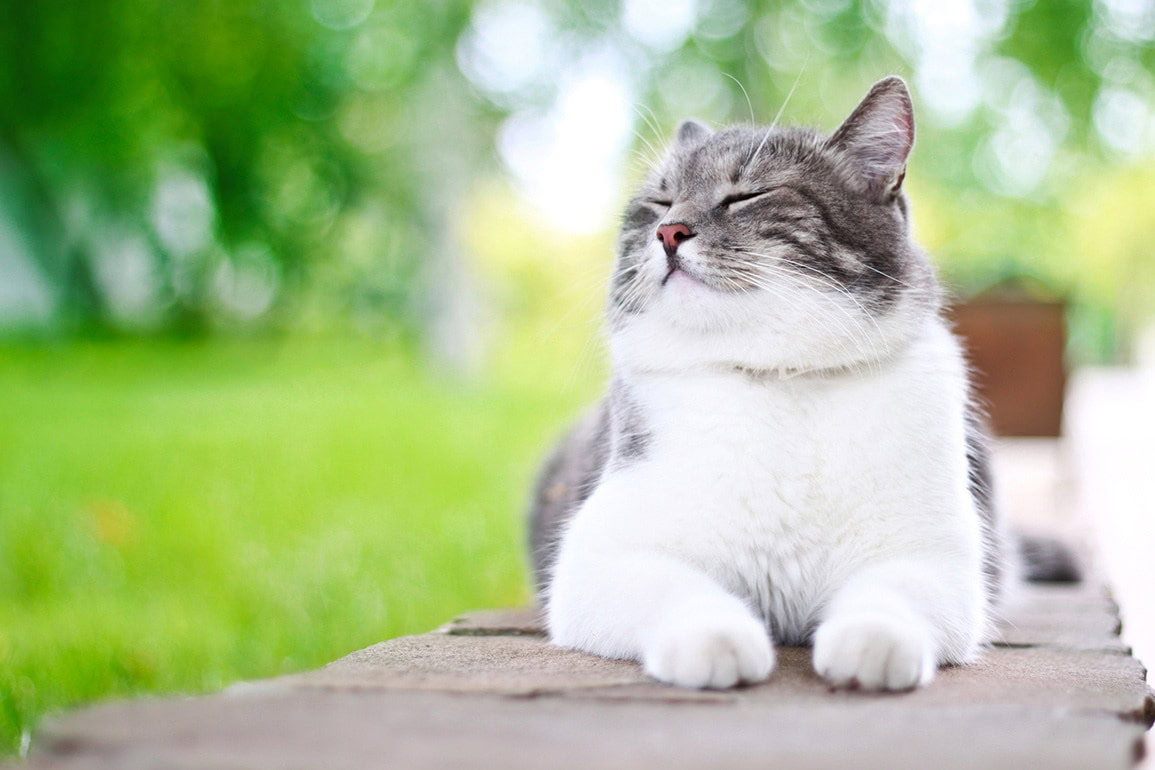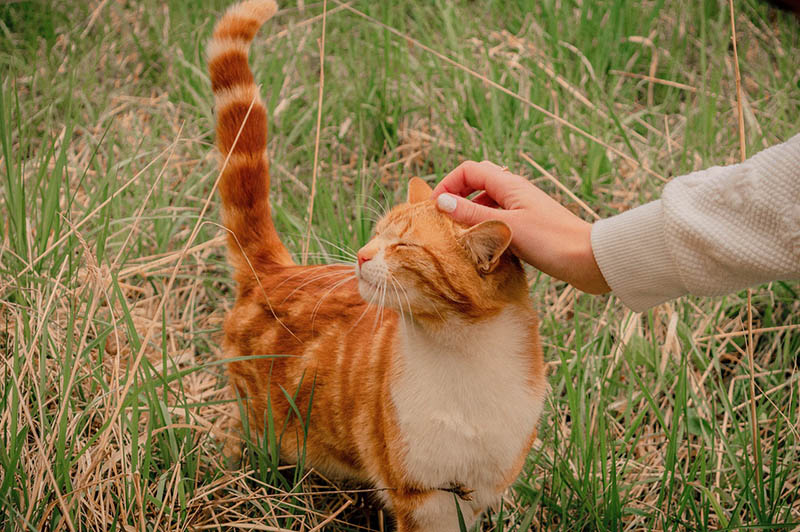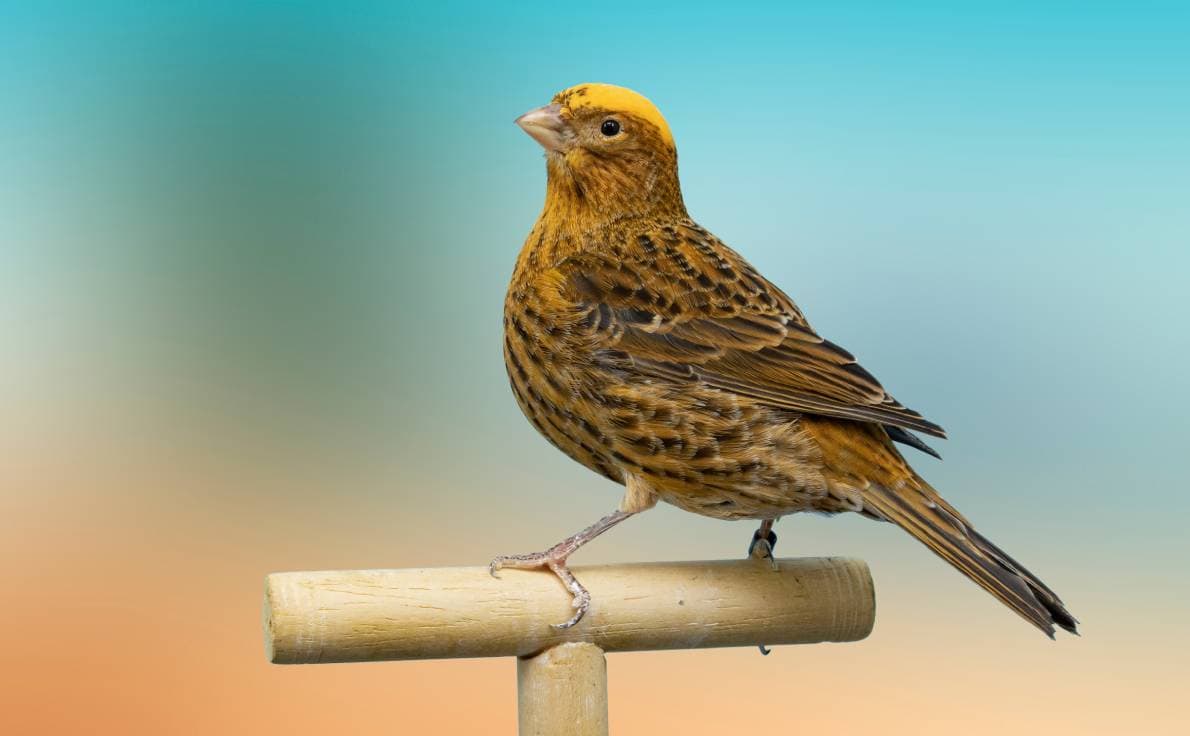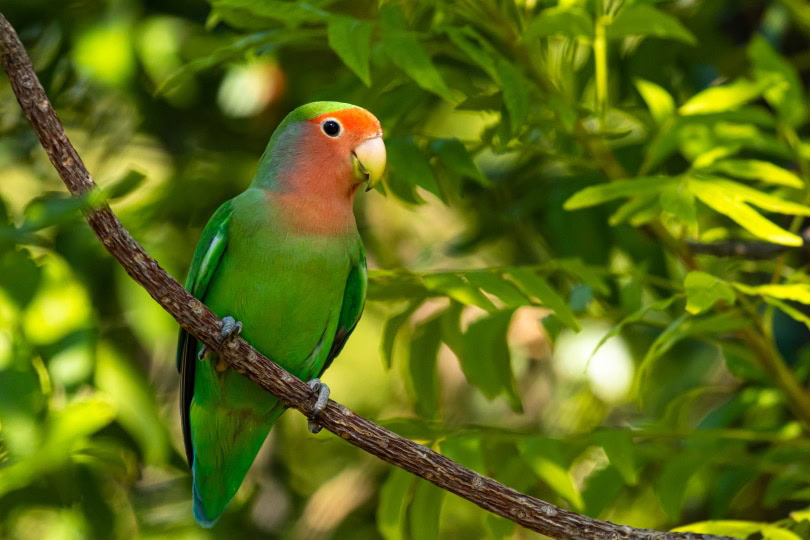VET APPROVED

The information is current and up-to-date in accordance with the latest veterinarian research.
Learn more »What’s more relaxing than the sound of a purring feline? We all want our cats to be happy, and purring is typically an excellent sign of contentment. But cats are mercurial creatures: One moment, they are rubbing against our legs, and the next, they’ve bolted under the furniture. They can spend hours snuggling in our laps or hours perched at the top of their cat tree. Felines seem to love us on their terms, never wanting us more than when our attention is elsewhere—whether we’re working on our laptops or about to run out the door. It is this lively and unpredictable interactivity that makes cats so special!

The 15 Signs to Figure Out If Your Cat Is Happy
Given all this moodiness and mixed messaging, how do you know when your cat is happy? We could simply break it down to eat, purr, and love, but body language, posture, and facial expressions can more deeply reveal what your pet is feeling at each moment. Read on to find out all you need to know to read your cat’s cues.
1. Healthiness

Routine checkups with the vet cat can help ensure that your cat is healthy and happy. When we feel unwell, we tend to be grumpy. Cats are no different: Physical discomfort negatively affects their mental well-being. Any unchecked illness, such as digestive issues, allergies, or arthritis, can dampen their joy. If your cat is purr-sistently unhappy, get in touch with a veterinarian.
2. A Good Appetite
Kitties with a good appetite are happy cats. Your pet will show enthusiasm for food by rubbing around your legs and meowing at you until you get their food bowl. If your cat makes it clear when they want treats and visibly enjoys their food, this is a great sign that your pet is doing well. However, a cat with too strong an appetite might be feeling lonely, bored, or depressed.
3. Lots of Purring
Purring is the main way that cats express their contentment, comfort, and love. Holding a purring cat is deeply relaxing for us,1 and it is even said by some to have curative powers. However, it is also known to have healing powers for your pet. If your cat purrs at unusual times, they may be comforting themselves. This can be a sign of distress or injury. Get a professional opinion if your kitty seems to be purring for no reason.

4. Playing
One of the best indicators of cat-isfaction is engaging in play. Older cats may not be as active as their younger counterparts, but they should still show a spark of interest when a favorite (or new) toy is offered for play. A happy cat is eager to have fun.
Regular play sessions can help your cat stay happy and healthy. Why not start the play with a fun toy like Hepper's Catnip Stick Toy? These sturdy toys are double-bagged, bite-proof, and filled with 100% organic catnip. Choose your favorite pastel color and treat your cat to hours of fun!
At PangoVet, we've admired Hepper for many years, and decided to take a controlling ownership interest so that we could benefit from the outstanding designs of this cool cat company!
5. Relaxed
In general, a relaxed cat tends to be free of anxiety, stress, and fear. A feline’s way of sitting or lying down is a clear indication of how content they are. Cats that aren’t happy won’t get comfortable with you or rest near you. Relaxed cats will sit with their paws under their bodies and their eyes half-closed. Happy felines feel safe in their environment. A cat lying on their back with their legs up in the air is also a great sign. Relaxed felines do not appear to be frightened by sudden sounds or movements, and they seem calm overall.
A comfortable cat is a happy cat - which is why giving our feline companions the right bed can help improve their mood and the bond we have with them. The Hepper Nest Bed was tailored specifically to cats and their needs to feel secure and warm. Not only will your cat enjoy this bed, pet owners will appreciate its modern, functional, easy-to-clean design. Learn more about the Nest here.
- HAPPY COZY CATS - Your kitty will bask in luxurious sherpa-lined comfort while feeling warm, safe,...
- MODERN DESIGN - Contemporary styling with upholstered fabric construction; just like your human...
- WARM FLEECE LINER - Self warming, thick sherpa fleece with microfiber trim.
At PangoVet, we’ve admired Hepper for many years and decided to take a controlling ownership interest so that we could benefit from the outstanding designs of this cool cat company!
6. Vocalizing & Chirping
Happy cats talk a lot. While we all know that cats meow, they make other noises to communicate with us, whether asking for food, requesting comfort, or asking to go outside. When they are feeling happy and content, they make specific noises, almost like they are responding to you. The quality of your cat’s noises matters; high-pitched sounds are better since lower-pitched growls can indicate frustration or unmet needs.
7. Rubbing & Head Butting
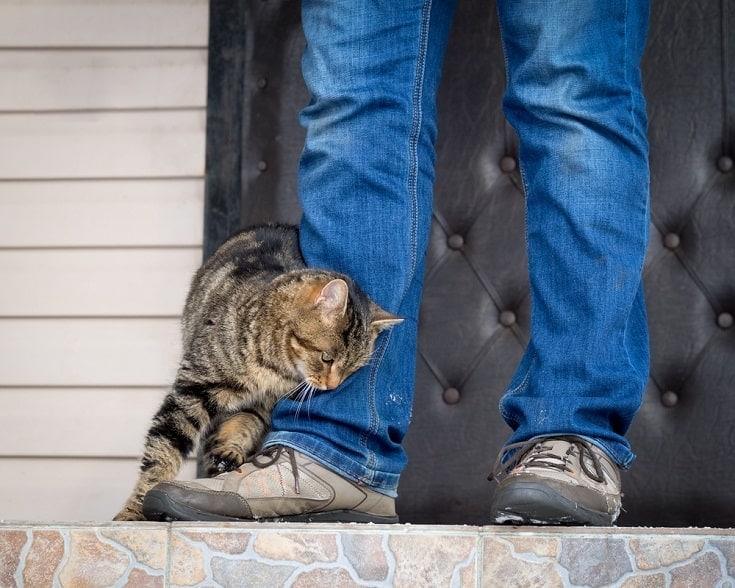
Cats rub against things, including their owners, to mark their territory. Rubbing signals that you are your cat’s possession, and they want to keep things that way. When they butt their head against your body, they are usually showing that they enjoy your company and that they want more of it.
8. Greetings
Felines communicate with their bodies. A cat that greets you warmly when you first wake up or when you come home from work is saying that they’re excited to see you. They will show this with an upright tail and erect ears and by rubbing their body around your legs. If your cat greets you this way, they’re happy in your company and enjoying life with you.
9. Kneading (“Making Biscuits”)
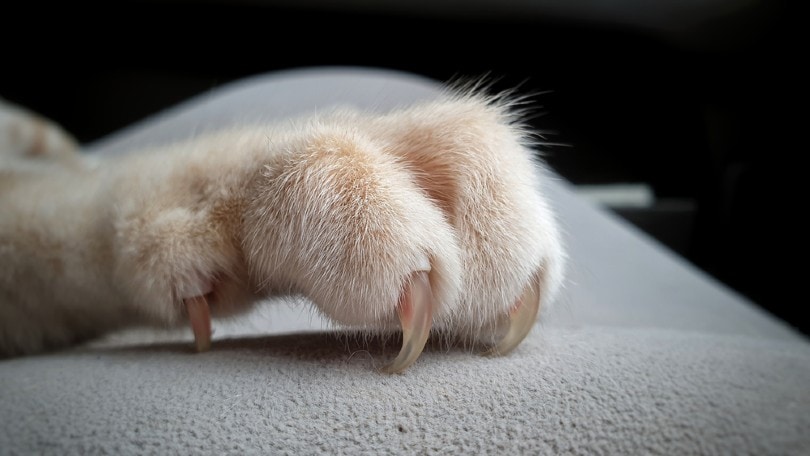
When cats knead things or people, they’re reliving kitten behavior. Nursing kittens knead their moms to release oxytocin, which relaxes them and makes their milk flow more easily. Kneading behavior recalls the mother-baby dynamic, so it probably means your cat is feeling safe and loved.
10. Curiosity
Does your cat run to the window to watch birds? Or do they check out the front door when the bell rings? If your cat is active in their environment, exploring and showing interest in new things, you can assume that they’re happy!
11. Friendliness
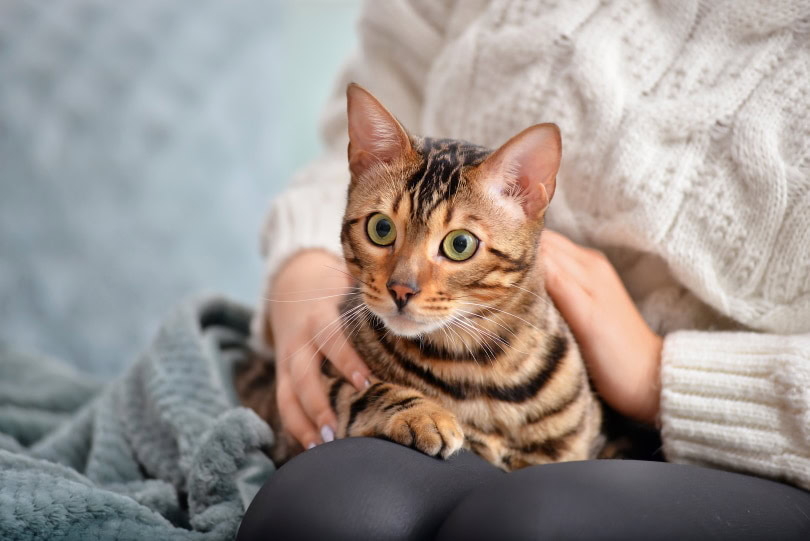
Happy cats generally have positive interactions with their owners and others around them. All cats, however, are unique. The fact that yours is aloof doesn’t necessarily mean they’re unhappy. Many cats find that less social interaction is more comfortable. Just watch out for any major changes in your cat’s behavior.
12. Catnapping
How many hours should your cat sleep each day? The needs of cats vary with their age and level of activity, so there is no single right answer. When a cat doesn’t sleep enough, it could mean something’s bothering them. Oversleeping can also be a bad thing. Humans can use sleep as a coping mechanism when they’re bored, lonely, sad, or depressed; cats can do that too. Monitor your kitty’s sleeping habits and note any significant changes.
13. Licking
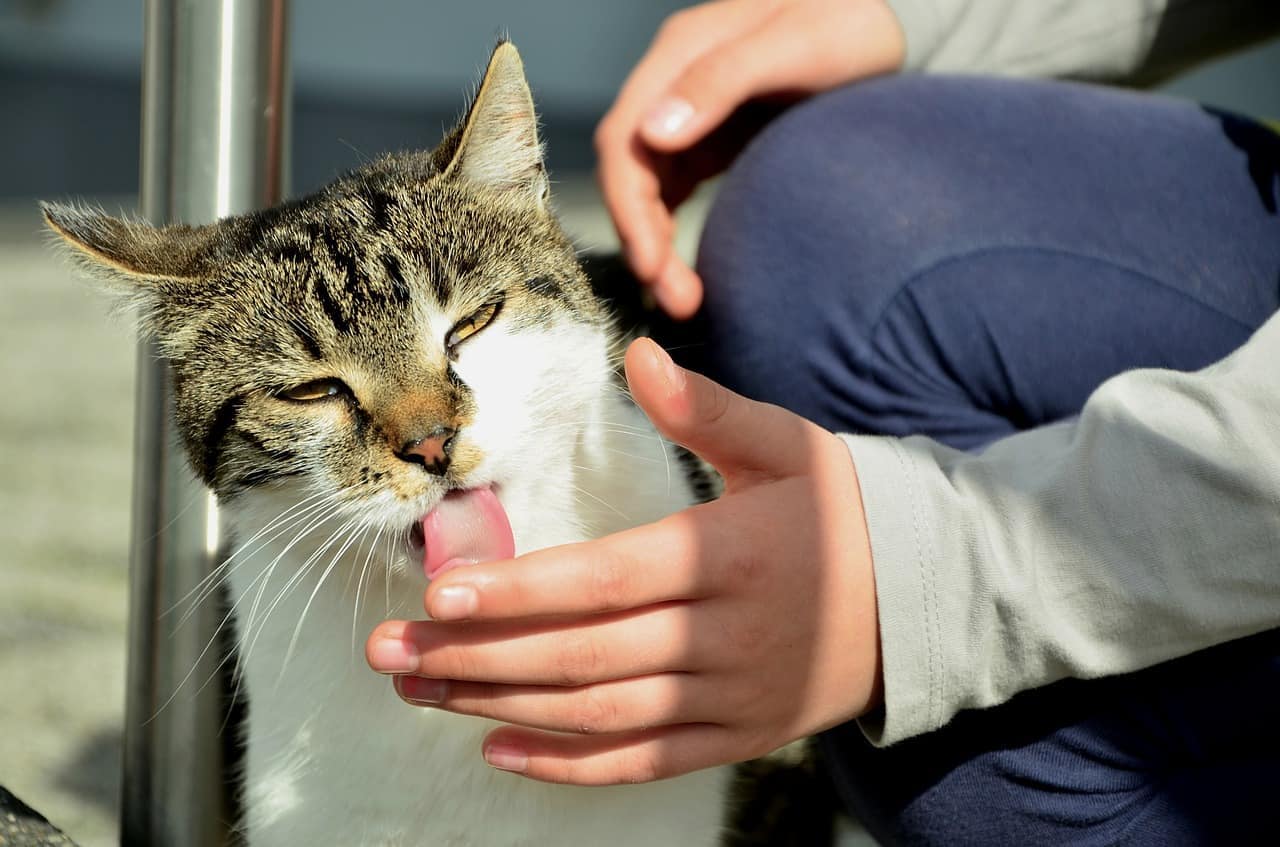
Grooming remains a top priority for happy cats. It’s normal for them to stop grooming when they’re deeply unhappy—for example, when they are sick. Cats love to groom, and if they groom you, it means you’re part of the family.
14. Social Sleeping
When a cat is truly happy, they will curl up next to you on the sofa or sleep with other cats if you have more than one. If your cat sleeps in your bed, while it may not be ideal for you, it’s a wonderful sign that they’re content and trust you completely.
15. Giving Presents
When your cat gives you presents, you know they love you because they’re sharing their hunting successes with you. If you find a dead mouse, frog, or bird, it’s a sign that your cat values you. Although it’s not pleasant, when they bring you anything they kill, think of it as a special gift from a happy cat.


Conclusion
There are many signs that your cat is happy, with purring and playing being the most obvious ones. As you get to know your pet better, you’ll learn more of their body language and can respond accordingly, such as soothing them when they’re feeling stressed or reciprocating their happy head bunts!
- Related Read: Do Cats Miss Their Owners?
Featured Image Credit: islam zarat, Shutterstock
Contents
- The 15 Signs to Figure Out If Your Cat Is Happy
- 1. Healthiness
- 2. A Good Appetite
- 3. Lots of Purring
- 4. Playing
- 5. Relaxed
- 6. Vocalizing & Chirping
- 7. Rubbing & Head Butting
- 8. Greetings
- 9. Kneading (“Making Biscuits”)
- 10. Curiosity
- 11. Friendliness
- 12. Catnapping
- 13. Licking
- 14. Social Sleeping
- 15. Giving Presents
- Conclusion
